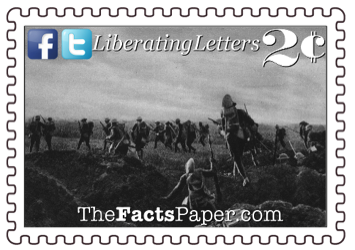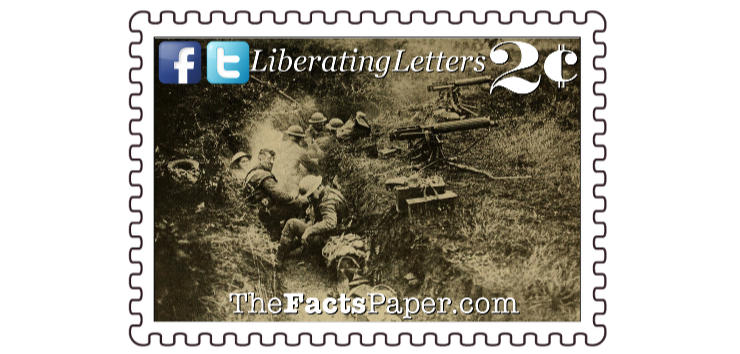In less than an hour, Cantigny was in the hands of the Americas along with 200 German prisoners. In addition, French flamethrowers canvassed the town, driving Germans out of any hiding places and dugouts. A series of counterattacks started that afternoon and lasted two more days. However, the Big Red One held strong and defended the area.
Compared to the large scale of the war, Cantigny was a relative small battle militarily. Regardless, the quick victory was momentous for the Americans as it marked their first offensive attack and triumph in the conflict. It not only boosted the morale of the AEF and the Allies, it gave those back home confidence and proved that America was a force to be reckoned with.
In another American morale booster, while the 1st Division overtook Cantigny, Edward “Fast Eddie” Rickenbacker entered a dogfight in a separate area of France. Shooting down his 5th enemy fighter, he became America’s first Flying Ace. (see A Hero’s Hero)
Once the machine guns were quite and the air was clear, the Allies counted over 1,600 casualties at Cantigny, of which 199 were fatalities. Included in the list of casualties was the small village of Cantigny itself. Whatever survived the initial American barrage was leveled in the multiple German counterattacks, leaving only a shell of a town.
Several major offensives were conducted as the fighting continued through the summer and fall, ending in multiple important American victories. (see A Reluctant Hero, Leading From The Trenches, and Cracking The Code) As a result, members of the Central Powers separately signed Armistices with the Allies, with a final cease fire occurring on November 11, 1918. (see Veterans’ Day and In Remembrance) Peace was formally declared with the Treaty of Versailles the following summer. Signed on June 28, 1919, the war ended on the 5th Anniversary of the assassination of Archduke Ferdinand and his wife, the event that set World War I in motion. (see The Shot That Changed The World)
Liberty, many believe the most financed armies and the most advanced troops will always be the victors. Yet what is often ignored is willpower, grit, and guts. The British learned that in the 1770’s. (see The Shot Heard ‘Round The World) The Central Powers discovered it at Cantigny.
The desire for liberty and freedom has amazing power. It can overcome the biggest odds and climb the highest mountains. It can give you the courage of your great-grandfather and the honorability of the black soldiers who stood for their country despite racial inequality. Liberty, never, ever give up because the odds may be stacked against you. Just remember your great-grandfather and the Big Red One, remember Cantigny, and go show them what you are made of.
That’s my 2 cents.
Love,
Mom
May 28, 2018
Dear Liberty,
Dawn was quickly approaching. It was now or never. The Germans captured Cantigny, a small little village atop a high area, months earlier. If allowed to keep it, their tactical advantage could prove devastating for the Allies. Therefore, General John J. “Black Jack” Pershing called in his most experienced men. It was time for the Big Red One to prove what Americans were made of.
When America was forced into World War I on April 6, 1917, she pledged to defend the Allies. However, the United States drastically lacked the forces needed to fulfill their promise. But that did not stop General Pershing. (see The Forgotten General) Though he vehemently disagreed with Democrat President Woodrow Wilson’s racist views and segregation of America’s armed forces, they did agree on one thing: America would fight under her own command. (see The Birth Of A Nation) The European commanders argued for amalgamation, which would just insert American forces into their units. However, Wilson wanted clear American results to report to the citizens to justify the war effort.
Following the Monroe Doctrine of 1823, the United States maintained neutrality as hostilities escalated in Europe. (see Doctrinally Sound) However, when it was discovered that Germany was trying to conspire with Mexico against the United States, Wilson had no choice but to get involved even though we lacked the manpower to do so with only 127,500 officers and soldiers. (see The Day America’s Neutrality Sank) Therefore, Congress passed the Selective Service Act of 1917, requiring able-bodied men between the ages of twenty-one and thirty to register with the Armed Services. The spread was later widened to ages eighteen to forty-five. Regardless, many voluntarily signed up to defend America and the Allies, though Wilson openly discriminated against black soldiers. (see The Birth Of A Nation) Despite Wilson’s racism, minorities also volunteered and proved to be some of America’s bravest soldiers. (see Like Father, Like Son and Cracking The Code)
As new recruits were gathered in the states, Pershing started training the experienced men he brought to France with him. While Pershing and the American soldier had seen their share of conflicts, including the recent Spanish-American War, the campaign in Europe was an entirely different creature. (see A Tale Of Two Soldiers) Pershing understood his men, both seasoned soldiers and new recruits, would need extra training to prepare for such a large scale war before entering the battlefields. In addition, American forces needed time to obtained their necessary supplies from the states.
Americans were familiar with trench warfare, the standard fighting technique of World War I, as we readily used it in the Civil War. However, 20th century artillery technology changed the dynamics of how to utilize it. With the help of the French, American troops trained in the trenches along side their European counterparts. (see Leading From The Trenches) Nevertheless, Pershing believed the Europeans relied too heavily on the one method of infantry fighting. Therefore, he insisted on including open warfare against the Central Powers.
By the end of 1917, the American Expeditionary Forces were already involved in battle, yet it was always defensively as Pershing continued to train his soldiers. However, as Germany gained more ground in France, Pershing had no choice but to go on the offense.
Germany attacked the tiny village of Cantigny, France, in March of 1918 during the Second Battle of the Somme. While the village itself was not crucial, the location was invaluable. The Allies needed that area back, so Pershing ordered the 1st Division, otherwise known as the Big Red One, to the Somme Sector for an offensive strike. (see Duty First) As the Americans arrived and prepared themselves, dogfights commenced in the air. Soon the well-known bright red triplane appeared on April 21, 1918, to attack a Canadian force near Amiens, France. Sergeant Lawrence Reynolds of 1st Infantry Battalion, 2nd Machine Gun Battalion, Company “C”, later told his family he remembered seeing that famous Red Baron plane in the air. He also remembered seeing it being shot down. (see The Red Knight Of Germany)
A few days later, American units set up in front of the French, ready to hold their positions against the Germans. For weeks, all along the front lines, both the Americans and the French repelled the Germans who were trying to infiltrate Allied territory, exchanging shell and machine gun fire. Sgt. Reynolds, your great-grandfather, along with the rest of his squadron, defended their section of land from their trench. As German shells blasted around them while bullets whizzed by, Reynolds’ 9-man squad fell one by one to the enemy’s artillery. Before long, Reynolds was the last man standing. The lone survivor that night of May 8th, Reynolds singlehandedly held his area, which was vital to the Allies. (see A Hero’s Story) He received both a Purple Heart and a Silver Star for his bravery and courage in the line of duty.
Scattered conflicts continued as the AEF finalized their plan of attack. Early in the morning on May 28th, the 1st Division, under the command of Major General Robert L. Bullard, began their first offensive attack against the Germans. Assisted by the French, machine gunners and other artillery concentrated their firepower on Cantigny. As a rolling barrage of shells strategically descended just in front of the 28th Infantry, the Americans quickly moved towards the village.
BIG RED WON




